Oil Pan Cleaning and Inspection F Car
- Remove the oil level sensor from the pan.
- Remove the oil pan cover, gasket, and bolts.
- Remove the oil pan drain plug and O-ring seal.
- Remove the oil pan baffle bolts and baffle.
- Drill out (3) the oil pan gasket retaining rivets (2), if required.
- Remove the gasket (1) from the oil pan.
- Clean the oil pan in solvent. Be sure to thoroughly clean all of the oil passages and recesses of the pan.
- Clean the oil pan gasket surfaces. Refer to Replacing Engine Gaskets .
- Dry the oil pan with compressed air.
- Inspect the gasket sealing surfaces for excessive scratches or gouging. Refer to Replacing Engine Gaskets .
- Inspect the oil pan oil level sensor seal surface for damage.
- Inspect the oil pan drain plug and threaded drain hole for damaged threads.
- Inspect the oil filter sealing surface for scratches or gouging.
- Inspect the oil passages for restrictions.
- Inspect the oil filter fitting (1) for a loose fit or damaged threads.
- Inspect the oil filter bypass valve (2) for proper operation.
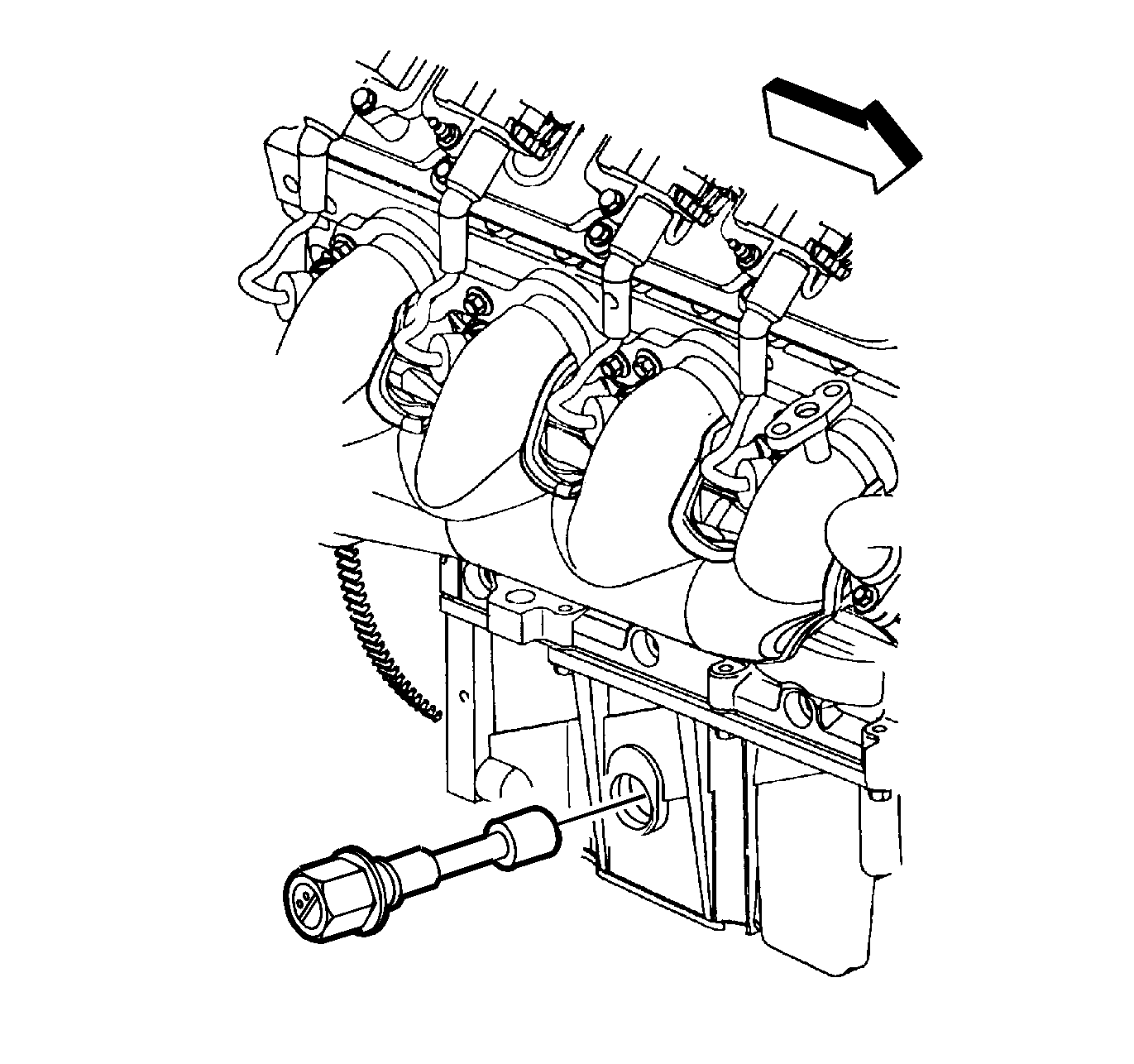
Important:
• Do not reuse the oil pan cover gasket. Install a NEW cover gasket during
assembly. • Do not reuse the oil pan to engine block gasket. Install a NEW gasket
during assembly. • When installing a NEW oil pan gasket, it is not necessary to install
the rivets that retain the NEW gasket to the pan.
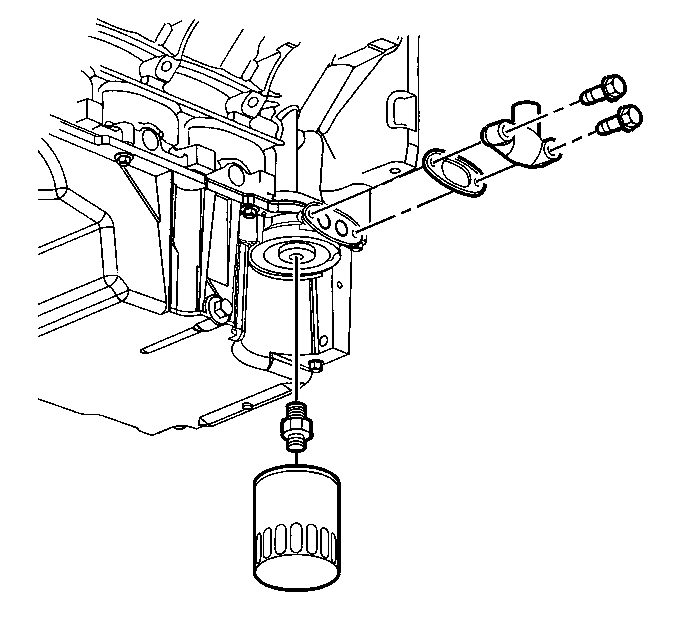
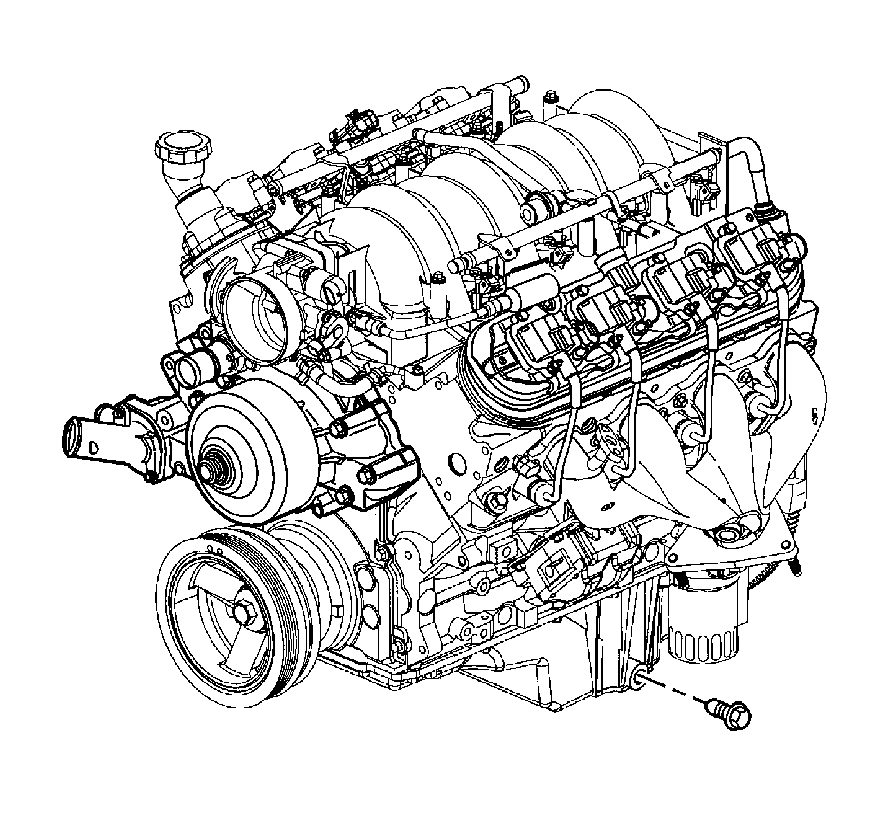
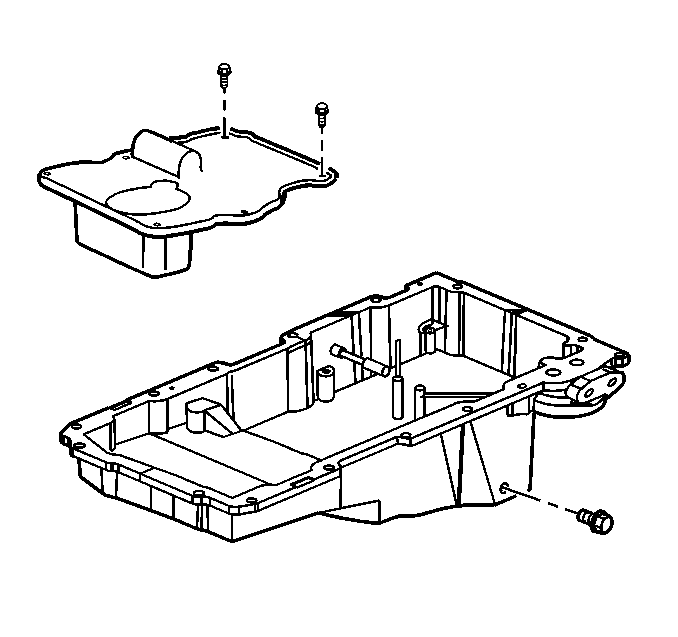
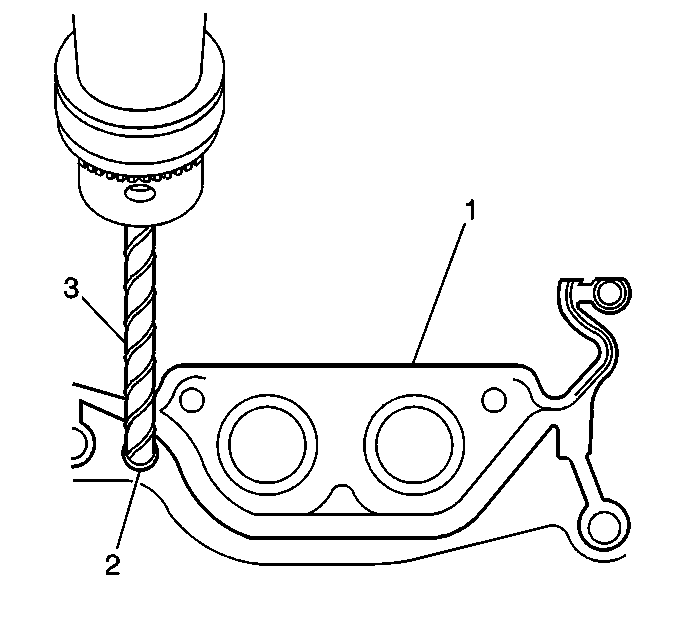
Caution: Wear safety glasses in order to avoid eye damage.

If the O-ring seal of the sensor is not cut or damaged, it may be reused.

The drain plug O-ring seal may be reused if not cut or damaged.
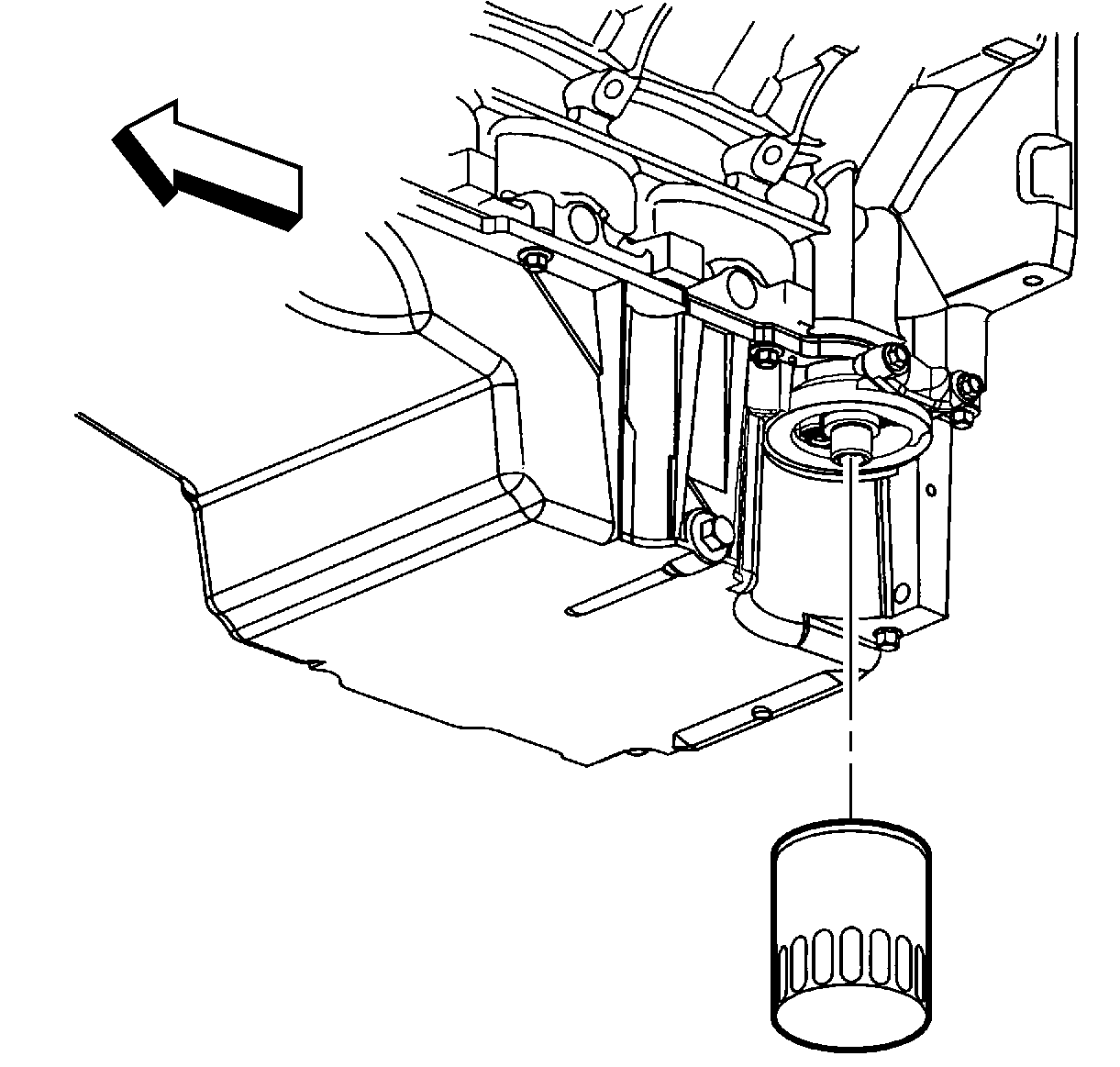
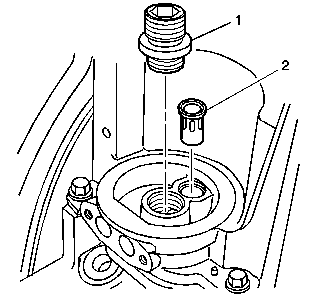
Lightly push the bypass valve into the bore. The valve spring should reseat the valve to the proper position.
Oil Pan Cleaning and Inspection Y Car
- Remove the oil level sensor from the pan.
- Remove the oil temperature sensor, oil pan cover, gasket, and bolts.
- Remove the oil pan drain plug and O-ring seal.
- Drill (3) out the oil pan gasket retaining rivets (2), if required.
- Remove the oil pan gasket (1).
- Discard the gasket.
- Remove the oil pan - lower - bolts (1-15).
- Separate the oil pan (1) - upper, gasket (2), oil pan (3) - lower, and bolts (4).
- Discard the oil pan gasket.
- Clean the oil pan halves in solvent. Be sure to thoroughly clean all of the oil passages and recesses of dirt and debris.
- Clean the oil pan gasket surfaces. Refer to Replacing Engine Gaskets .
- Dry the oil pan with compressed air.
- Inspect the gasket sealing surfaces for excessive scratches or gouging. Refer to Replacing Engine Gaskets .
- Inspect the oil pan oil level sensor seal surface damage.
- Inspect the oil pan drain plug and threaded drain hole for damaged threads.
- Inspect the oil filter and pan cover sealing surface for scratches or gouging.
- Inspect the oil passages for restrictions.
- Inspect the oil filter fitting (1) for a loose fit or damaged threads.
- Inspect the oil filter bypass valve (2) for proper operation.
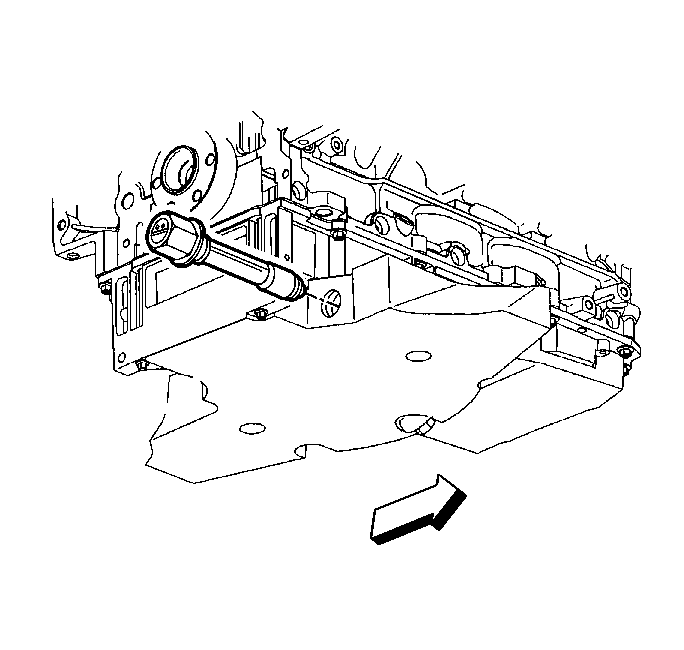
Important:
• Do not reuse the oil pan gaskets. Install NEW gaskets during assembly. • When installing a NEW oil pan gasket, it is not necessary to install
the rivets that retain the NEW gasket to the pan.
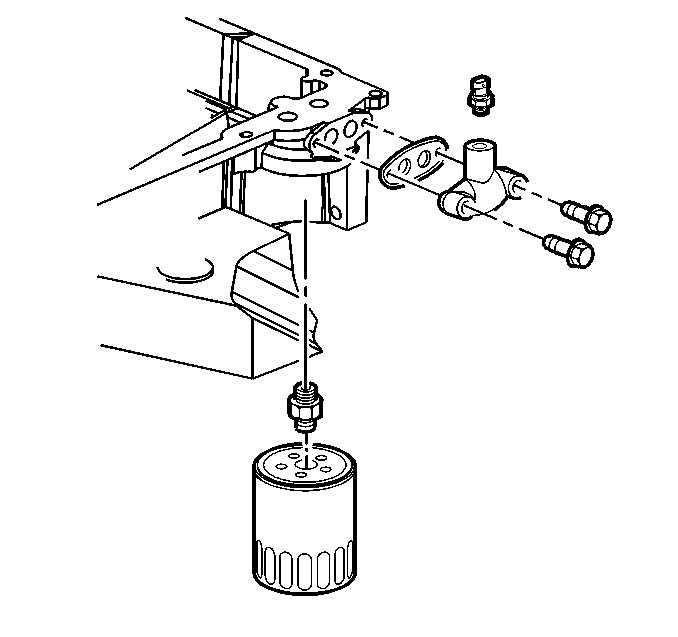
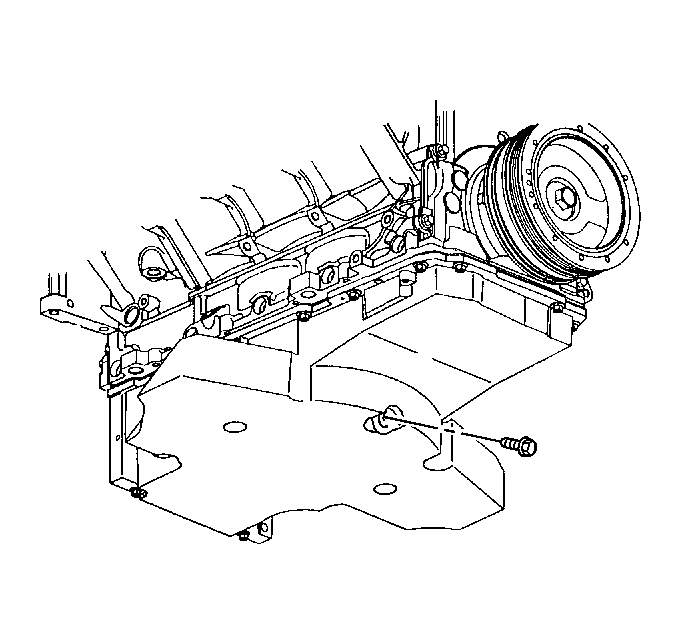

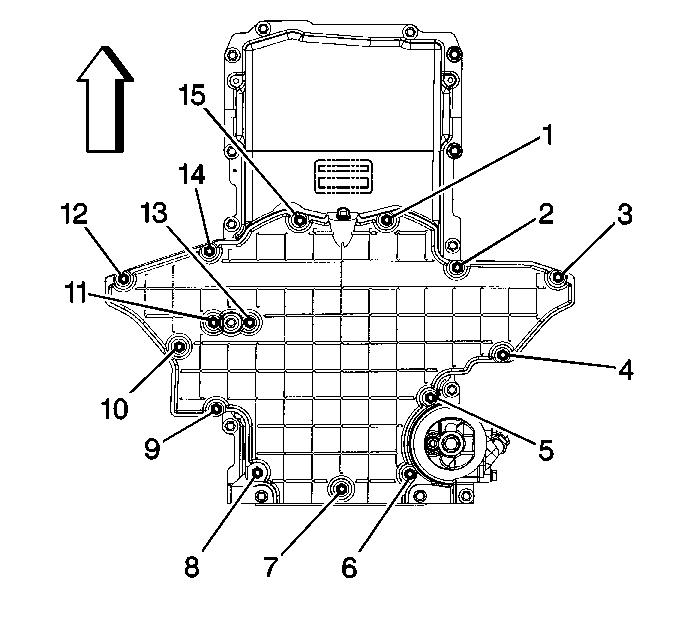
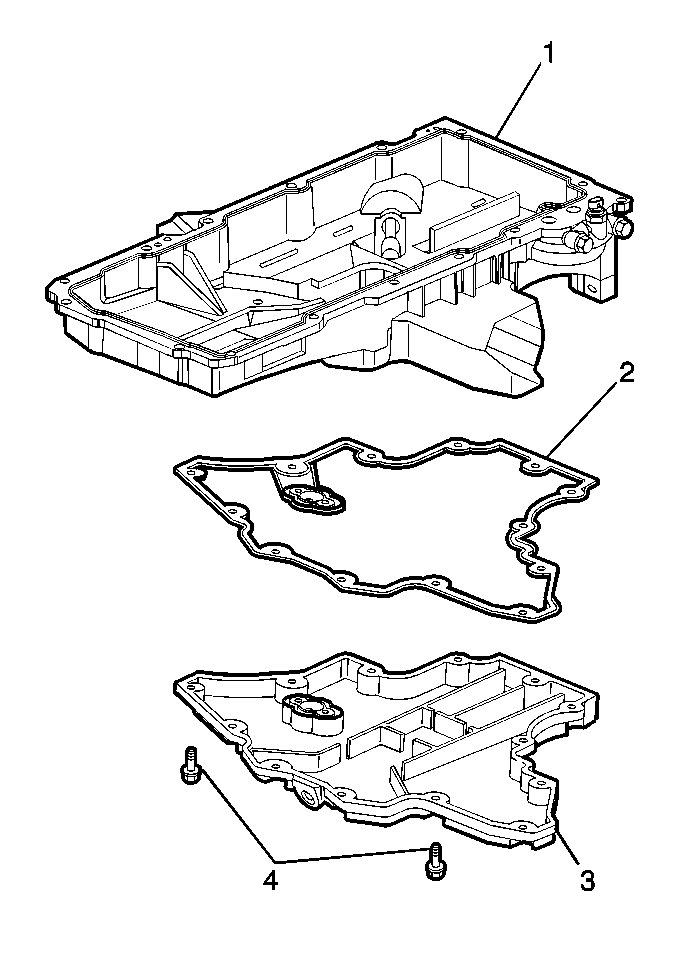
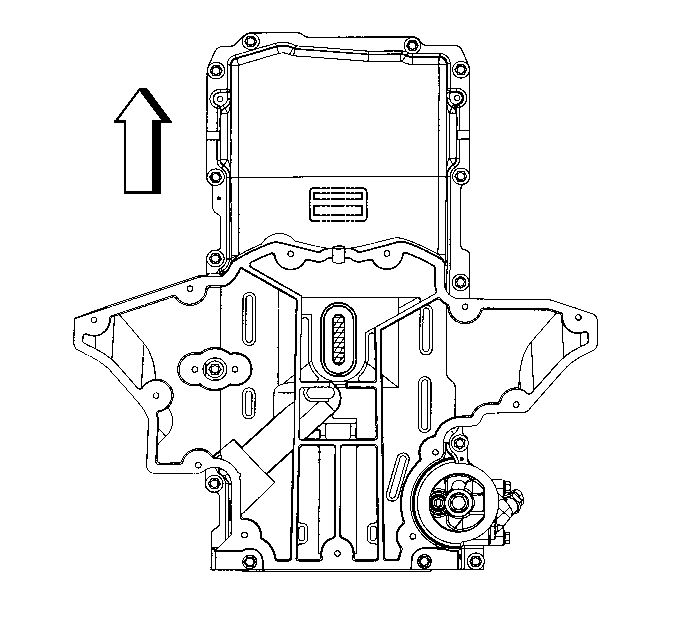
Caution: Wear safety glasses in order to avoid eye damage.

The O-ring seal of the sensor may be reused if not cut or damaged.

The drain plug O-ring seal may be reused if not cut or damaged.


Lightly push the bypass valve into the bore. The valve spring should reseat the valve to the proper position.
